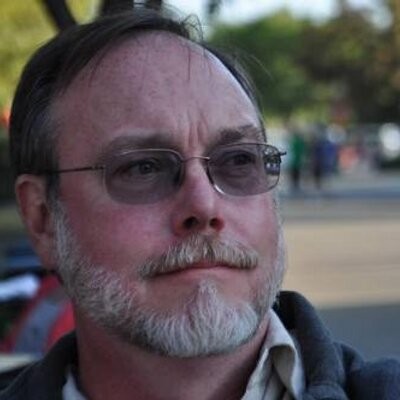Colorado is photogenic, and proves it in more than a hundred films. It first posed for the camera in 1897, when James H. White and Frederick Blechynden shot short “actualities” such as Procession of Mounted Indians and Cowboys, and the kinetic Denver Fire Brigade, in which horse-drawn engines, careening and chuffing smoke, darted obliquely toward and past the camera as an excited throng watched from both sides of a downtown Denver street. After a brief spate of silent-era Westerns and adventure films, Hollywood largely abandoned the state until after World War II. As filmmaking technologies improved and the interstate highway system took shape, it become more cost-effective for film crews to shoot on location. Since then, a number of great films (and plenty of stinkers) have been shot here.
This list avoids the obvious “greatest” and highest-grossing films made here, as well as many Westerns, which we'll tackle in a future edition. In the meantime, here are some oddball gems, forgotten favorites – and just plain strange flicks filmed in Colorado.
5) The Glenn Miller Story (1954)
This lavish biopic of the famed, short-lived bandleader was hugely successful, the first non-Western collaboration between Jimmy Stewart and director Anthony Mann. Glenn Miller’s Colorado connections are bona fide – he went to high school in Fort Morgan, went to the University of Colorado in Boulder for a semester before flunking out, and met his wife there. Filming took place near the Old Main building on the CU campus and at the old Elitch Trocadero Ballroom, and there’s a brief shot of Stewart calling his girlfriend from a gas station on Colfax, with the Capitol in the background.
4) The Unsinkable Molly Brown (1964)
Pure hokum. The adaptation of the hit Broadway musical by Meredith Willson (The Music Man) about early Denver character and heroine “Molly” Brown (Margaret, actually; her friends called her Maggie) resembles history at no particular point. But it’s a hoot, one of the last of the old-school, Golden Age film musicals. Debbie Reynolds liked Colorado so much while they were shooting here, she built a house in Ouray in which her mother lived for years. Pretty much all soundstage, but bits were filmed around and at the steep edge of the Black Canyon of the Gunnison, where Harve Presnell sings the bravado solo “Colorado, My Home.”
3) Dog Star Man (1964)
While Molly Brown was wrapping up, a young South High School grad was living up past Nederland at what used to be Lump Gulch, an abandoned mining camp. There with then-wife Jane, avant-garde legend Stan Brakhage was just finishing four years’ work on five interconnected short films called, collectively, Dog Star Man. Like some trippy shaman, Brakhage dreams on film and channels a creation myth, by turns visionary and self-indulgent. At the same time, he creates a new form of seeing, a kinetic visual poetry: film as idiosyncratic direct expression instead of a steamrolled, mass-market product. There had been experimental filmmakers before, but Brakhage caught the zeitgeist and surfed it. He continued to experiment and innovate for years, creating beautiful work while teaching at CU-Boulder.
2) In Cold Blood (1967)
The horrifying story of the Clutter family murder, captured by Truman Capote in his famous novel-as-reportage, was adapted by Richard Brooks almost immediately after publication. Much of the story was filmed where it happened, in Kansas, but the agonizing executions of Dick Hickock and Perry Smith at the end of the film were staged at Colorado’s old state prison in Canon City – the closest place with a working gallows. Robert Blake’s last words: “Is God in this place, too?”
1) Downhill Racer (1969)
Portrait of the hero as a heel. Robert Redford plays an aspiring Olympic skier who’s also a selfish, cold son of a bitch. Director Michael Ritchie’s ruthless examination of what it takes to make it in the elite sports world includes a visit by the alienated main character to his boyhood home in Idaho Springs, where he rubs his distant, contemptuous father the wrong way. (He runs a few laps around the CU-Boulder practice track, too.)
After the intermission: Another round of movies filmed in Colorado that include singing cannibals, a most awesome Dodge Challenger and Matt Dillon’s first film....
[
{
"name": "Air - MediumRectangle - Inline Content - Mobile Display Size",
"component": "12017618",
"insertPoint": "2",
"requiredCountToDisplay": "2"
},{
"name": "Editor Picks",
"component": "17242653",
"insertPoint": "4",
"requiredCountToDisplay": "1"
},{
"name": "Inline Links",
"component": "18838239",
"insertPoint": "8th",
"startingPoint": 8,
"requiredCountToDisplay": "7",
"maxInsertions": 25
},{
"name": "Air - MediumRectangle - Combo - Inline Content",
"component": "17261320",
"insertPoint": "8th",
"startingPoint": 8,
"requiredCountToDisplay": "7",
"maxInsertions": 25
},{
"name": "Inline Links",
"component": "18838239",
"insertPoint": "8th",
"startingPoint": 12,
"requiredCountToDisplay": "11",
"maxInsertions": 25
},{
"name": "Air - Leaderboard Tower - Combo - Inline Content",
"component": "17261321",
"insertPoint": "8th",
"startingPoint": 12,
"requiredCountToDisplay": "11",
"maxInsertions": 25
}
]











